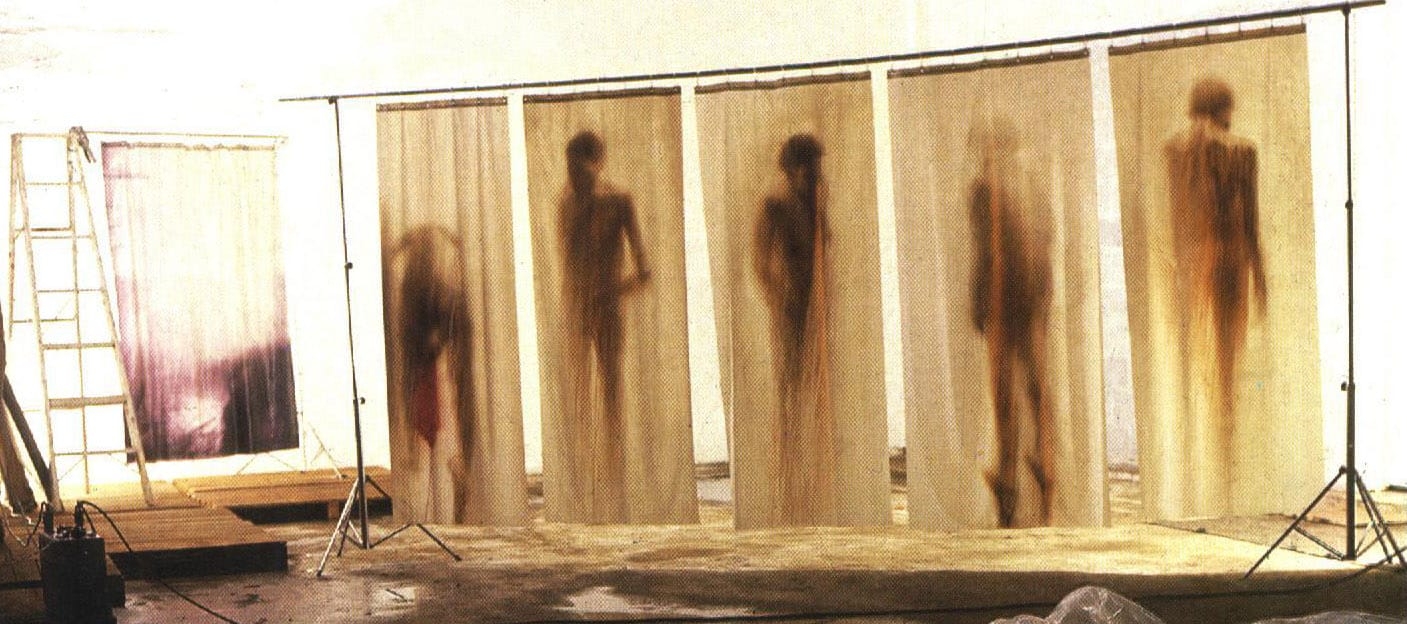Early 1980s
History
The Colombian government attempts to pacify the country, but the low-grade civil war becomes more complicated when violent confrontations between guerrilla groups and drug traffickers begin to take place. At the same time, the FARC (Revolutionary Armed Forces of Colombia) benefit from the drug trade by imposing a “revolutionary tax” on the cocaine-producing territories under its control. Several paramilitary groups emerge. In conjunction with the government’s Armed Forces, the Rural Association of Ranchers and Farmers of the Mid-Magdalena, or ACDEGAM, defends land and property in rural areas, but also engages in assassinations of leftist politicians. The Americas Anti-Communist Alliance (AAA), whose members were part of the government’s Armed Forces, resorts to unlawful means in its war against guerrilla groups. Drug cartels flood the country with currency when they buy land from large landowners, who were traditional members of the wealthy elite. The paramilitary that defended these properties now becomes allied with the cartels, the new owners.
Art/Culture
Under political repression, Colombian artists seldom address specific social or political issues in their work. Conceptual Art dominates the Colombian art scene, fostering formal experimentation and new uses of photography to comment on society. Bernardo Salcedo combines photographs with found objects, while Luis Fernando Valencia experiments with chemical developers to leave an imprint of his body on paper. Other artists working conceptually include Fernell Franco and Miguel Ángel Rojas.1 With the rise in violence, the Cali art scene enters a period of crisis. Artists become more isolated from one another and the public. Filmmakers in the Cali Group make three films in the horror genre known as Tropical Gothic: Pure Blood, 1982; Flesh of Your Flesh, 1983; and Araucaima’s Mansion, 1986.2 Muñoz designs the poster for Flesh of Your Flesh, directed by Carlos Mayolo.
The Artist
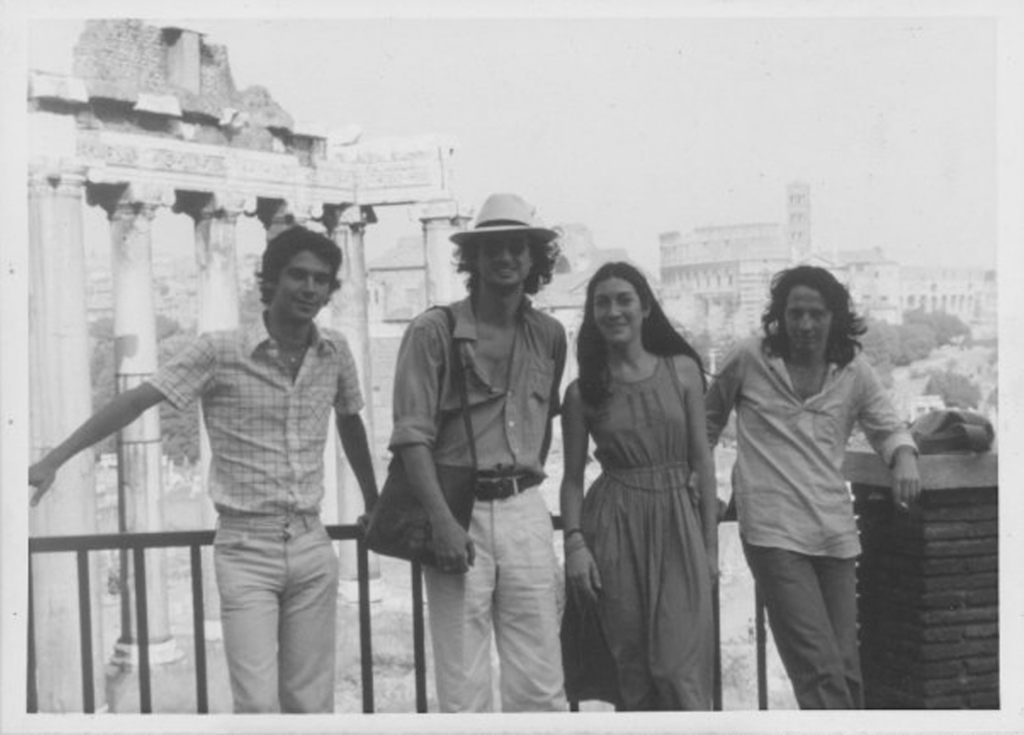
Muñoz begins to eliminate representation of the human figure in his series Interiors. He focuses instead on the interplay of light and texture on various surfaces, especially shower stalls with white tiles and translucent curtains. Lighter tonal values sometimes shift toward whites so radiant that the object becomes almost abstract. Muñoz experiments with the notion of the figure situated between materialization and dematerialization.3 He explains that his process “has to do with that idea I have of Cali’s atmosphere. That is a determinant factor, along with the question of light, meaning that blurriness of humidity-laden air, those white and opalescent skies. The calina or calima—a very local word—is like a humid haze that is less dense than fog, but affects visibility. Somewhere I said long ago that there is a time of day in Cali when people seem to fall apart.”4
1980
History
Drug trafficker Pablo Escobar is elected to the Colombian Congress, but a public campaign reveals his connection to the drug trade, and he loses his position and his visa for the United States. The US-Colombia Extradition Treaty is under review by the Colombian Ministry of Justice, but the country’s single focus on fighting guerrilla groups allows traffickers to continue to act with total impunity, and in some instances, under the protection of the state.5 The M-19 guerrilla group takes over the Dominican Republic’s embassy and holds sixteen ambassadors hostage for sixty-one days. President Turbay pays the insurgents a large ransom and allows them to leave for Cuba.
Art/Culture
A group of photographers represents Colombia at the XXIX Venice Biennial. The exhibition is shown in 1981 at the Museum of Modern Art La Tertulia.6 The Company for Cinematographic Support (FOCINE), the national state fund to support film projects, is dissolved. Many Cali filmmakers shift to video.7 United States art critic Lawrence Alloway organizes the exhibition Realism and Latin American Painting: The 1970s at the Center for Inter American Relations in New York. It includes works by Muñoz.
The Artist
Muñoz presents individual exhibitions at the Gallery Fred Lanzenberg, Brussels; Gallery Albert Loeb, Paris; and at the Colombian-French Alliance Center, Cali. He also participates in a group show at the Museum of Modern Art of Monterrey, Mexico.
1981
Art/Culture
The IV Americas Biennial of Graphic Arts is held in Cali. The IV Medellin Art Biennial presents the “Colloquium on Non-Object Art and Urban Art.” Beatriz González exhibits her piece Decoration for Interiors at the Garcés Velásquez Gallery, a leading art gallery in Bogotá. This large curtain-like installation is critical of President Julio César Turbay Ayala.
The Artist
The exhibition Oscar Muñoz, Charcoal Drawings takes place at the Garcés Velásquez Gallery.
1982
History
Conservative Party candidate Belisario Bentancur is elected President of Colombia until 1986. During his term, he attempts to pacify the country.
Art/Culture
Gabriel García Márquez receives the Nobel Prize for Literature. The show Oscar Muñoz, Ever Astudillo, Miguel Ángel Rojas and Saturnino Ramírezis presented at the Museum of Modern Art La Tertulia, Cali.
The Artist
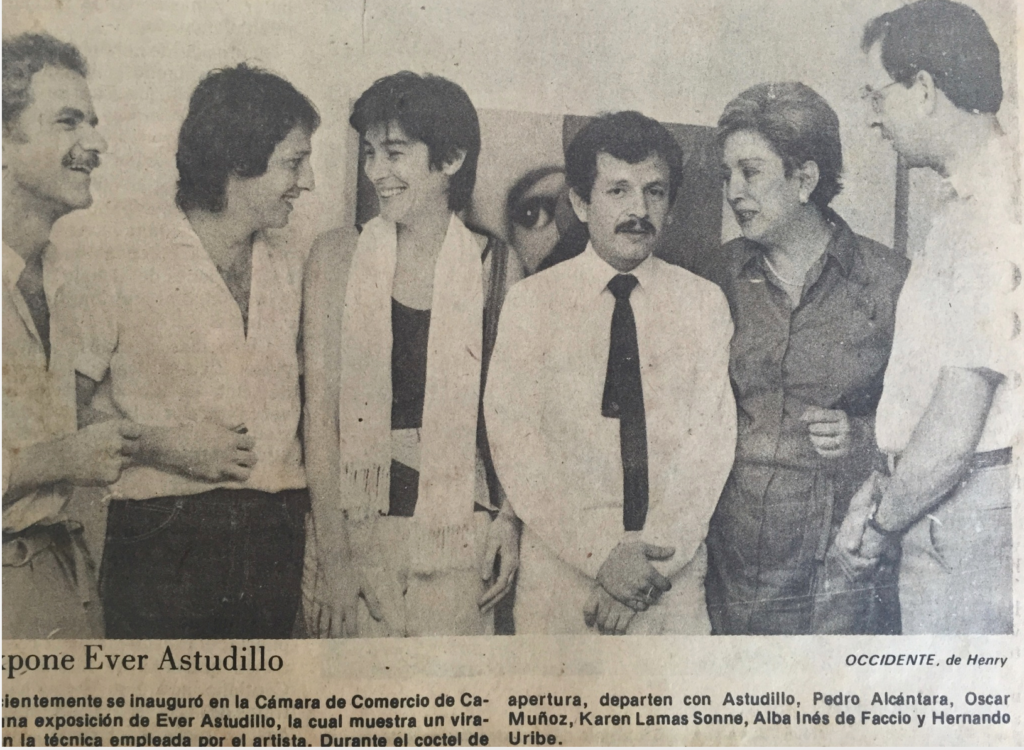
The exhibition Oscar Muñoz is presented at the Center for Present-Day Art in Pereira, Colombia. The artist uses a limited color palette in his pastel drawings.
1983
History
In March, an earthquake results in a significant death toll and damages in Popayán, a city sixty-nine miles south of Cali, known for the splendor of its colonial architecture. Extradition requests for drug traffickers begin to arrive from the United States, alarming cartel leaders and prompting numerous legal challenges to the Extradition Treaty on the grounds of unconstitutionality. There is a wave of death threats against Colombian judges who approved the treaty.8
Art/Culture
The exhibition Five Colombian Artists is shown in Buenos Aires, Santiago, São Paulo, and Paris. It features artists of the Cali Group, including Muñoz. The exhibition Colombian Realists, on view at the Museum of Modern Art La Tertulia, includes works by Muñoz. In November, art critic Marta Traba dies in a plane crash in Madrid.
The Artist
The exhibition Oscar Muñoz is presented at the Chamber of Commerce, Cali.
Mid-1980s
History
President Bentarcur negotiates a ceasefire with the FARC which lasts from 1984 to 1987. As part of the peace process, the FARC forms a leftist political party, the Patriotic Union (UP), whose members are not part of the armed conflict. A new, devastating viral illness named AIDS (acquired immune deficiency syndrome) emerges.
Art/Culture
Colombian cultural activities decline due to budget cuts for arts organizations, kidnapping or extortion of art collectors, and infiltration of money laundering within the art market.9
The Artist
Muñoz teaches for seven years at the Departmental School of Fine Arts in Cali. His formal classes on drawing encourage an experimental approach, expanding traditional understandings of the medium. The artist reaches a turning point in his career. He continues to base his work on photographs, but returns his focus to the human figure. He seeks a more dynamic engagement with the viewer by adopting new materials as supports.
1984
History
In April, attempting to prevent his extradition to the United States, Pablo Escobar orders the assassination of the Minister of Justice Rodrigo Lara. A full-on war begins between the Colombian state and the drug cartels.
Art/Culture
The I Havana Biennial is held in Cuba. Muñoz participates in this exhibition.
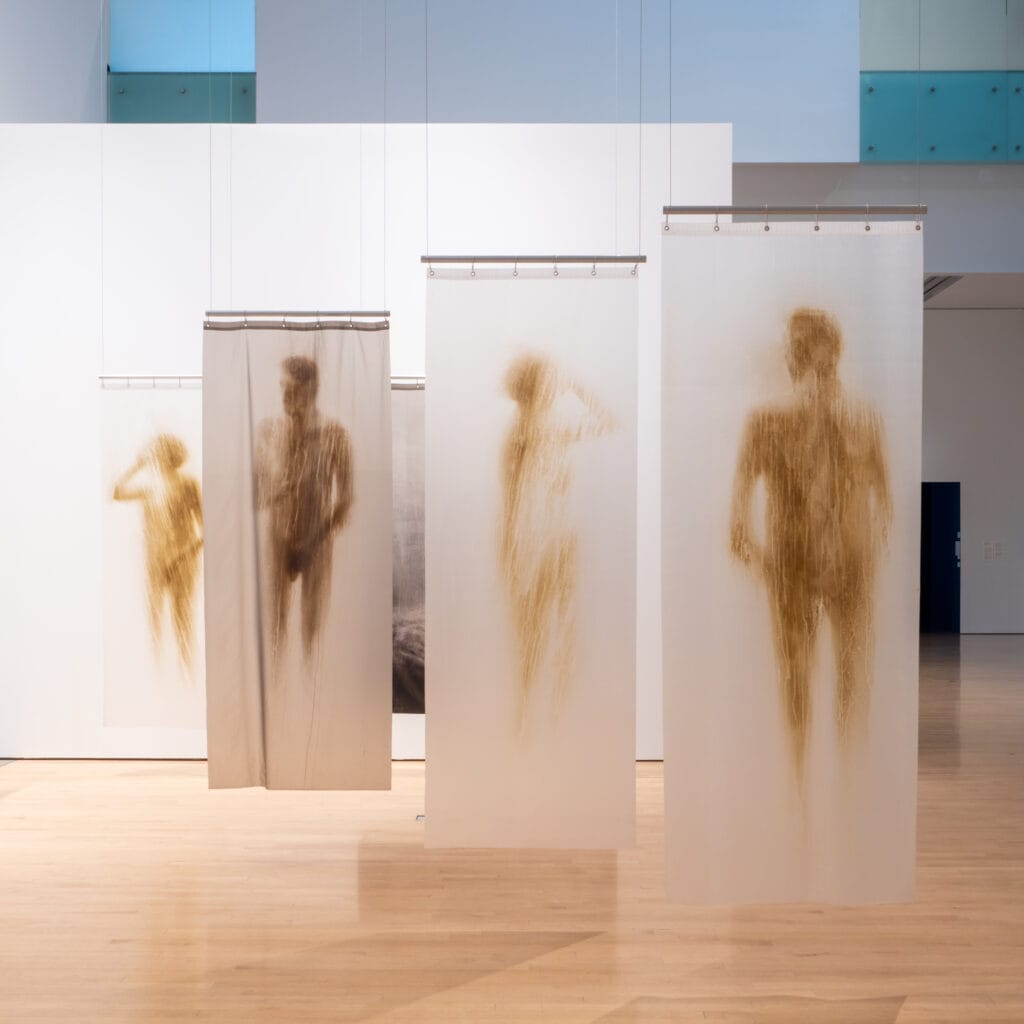
The Artist
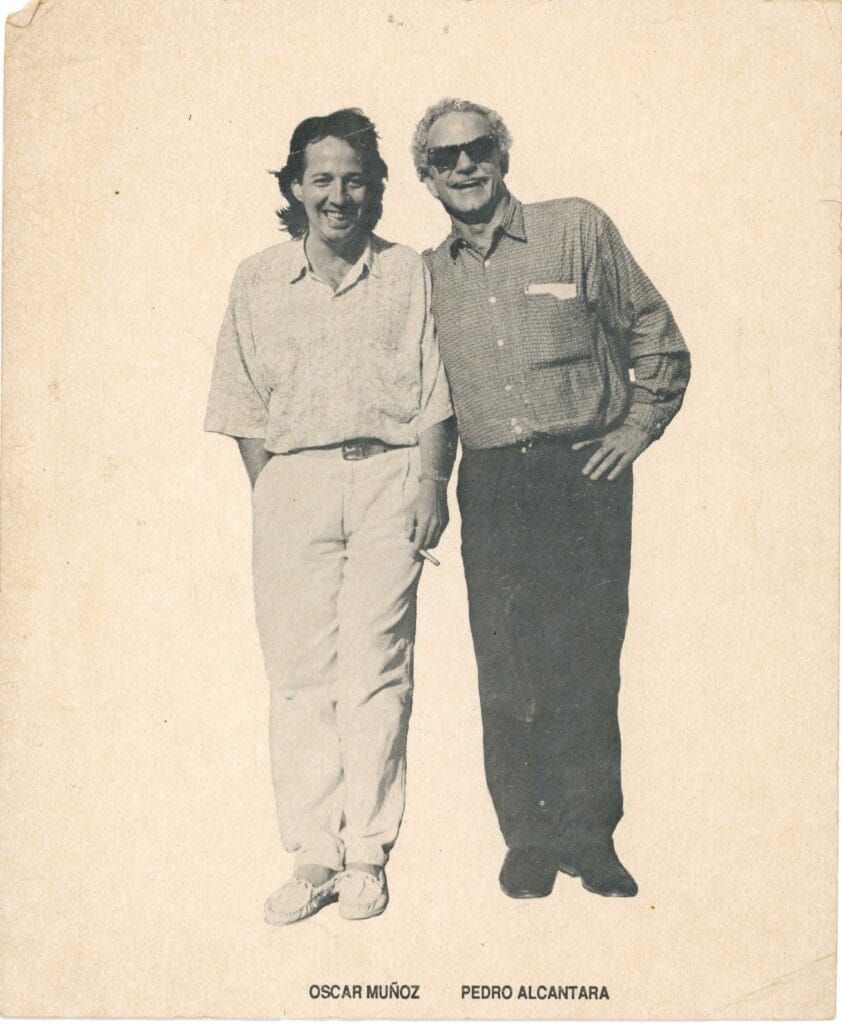
In his Shower Curtains series, Muñoz replaces the translucent shower curtain of his earlier drawings with an actual plastic curtain as his new support. In this series of three-dimensional installations, real water is also included. To produce this work, Muñoz silkscreens a life-size photographic image of a nude human figure onto a plastic curtain by airbrushing acrylic paint through a silk mesh (previously prepared with photographic emulsion). Right after the plastic surface is printed, water is dripped over the wet paint, leaving traces that emphasize the function of the curtains. Each plastic sheet depicts the silhouette of a nude body in a different pose, as if taking a shower.10 In one case, what is being washed away is blood. Muñoz explains that his drawings “begin to evaporate, to become faint, in an attempt to transform materiality, to seek more a sensation than a presence. From there I go on to make Shower Curtains. But this was a very complex development. It seems simple, but that step of giving up the support that I had been working on for years was a difficult investigation.”11 He clarifies that “although I may change materials and experiment with new ones, I am still doing the same thing, with the same fundamental concerns.”12
1985
History
One of the deadliest confrontations in Colombia’s civil war takes place on November 6: The Palace of Justice in Bogotá (the seat of the country’s Supreme Court), is violently seized by M-19 guerrillas. They hold twenty-four members of the Supreme Court hostage, along with twenty other judges and three hundred additional people, with the objective of putting President Betancourt on trial. On November 7, army troops storm the building and more than one hundred people are killed, including half of the Justices and several leaders of M-19. Thousands of criminal records and documents are lost in the two-day fire that ensued. The lack of a proper investigation into the attack has a demoralizing effect in the following years. A few days later, on November 14, the volcano Nevado del Ruiz erupts and kills more than 20,000 people in Armero, a town 180 miles northeast of Cali, after the government ignored early warnings of the impending eruption. It is the second-deadliest volcanic disaster of the twentieth century.
Art/Culture
Colombian artists such as Beatriz González and Doris Salcedo see the violent events during this year as a turning point and begin to address political issues in their work.13 Beatriz González produces Funerary Monument for High-school Soldiers. This camouflage-covered assemblage consists of a commercial sculpture of a blessing Christ child standing on a pedestal made with upside-down clay pots. It honors young men killed during a training exercise. The Cali Cultural Center opens.
The Artist
The solo exhibition Oscar Muñoz is presented at the Museum of Modern Art La Tertulia. It includes Shower Curtains, exhibited for the first time.
1986
History
The Liberal Party candidate Virgilio Barco Vargas is elected President of Colombia until 1990. The Patriotic Union (UP) achieves a degree of political representation in the provincial elections, resulting in the methodical assassination of thousands of its members, along with other leftists. Widespread violence ranges from military combat to criminal warfare. President Barco Vargas creates a military task force to apprehend Pablo Escobar.
Art/Culture
The XXXI National Salon of Artists in Bogotá includes Munoz’s installation Shower Curtains. He produces several versions of this work, which critics perceive as innovative.14 The I Cali International Art Festival is organized by the Association for the Promotion of the Arts under Claudia Blum de Barberi. Muñoz participates in the V Americas Biennial of Graphic Arts at the Museum of Modern Art La Tertulia. He also takes part in ARCO ’86, Contemporary Art, International Art Fair of Madrid, presented in Spain by the Quintero Gallery of Barranquilla, and in the First Paper Biennial at the National Museum of Fine Arts in Buenos Aires.
The Artist
Muñoz has solo exhibitions at the Autopista Art Gallery, Medellín and Garcés Velásquez Gallery, Bogotá.
1987
History
In February, the Colombia’s Supreme Court declares the drug-related Extradition Treaty with the United States null and void, arguing it was not properly ratified by Turbay’s administration. President Barco Vargas attempts to ratify the treaty, but he is unsuccessful and the court still considers it void. Colombia loses its main weapon to combat drug trafficking. Negotiations between the government and the FARC are officially paused.
Art/Culture
The XXXI National Salon of Artistsawards Doris Salcedo first prize for her haunting, untitled assemblage of discarded hospital beds. Beatriz González participates with her painting Sr. Mr. President, What an Honor To Be With You at This Historic Moment, that refers to the 1985 seizure of the Palace of Justice. In May, the II Cali Art Festival presents the retrospective Oscar Muñoz: 15 Years, held at the Cali Chamber of Commerce, Department of Cultural Extension. The show includes his new series Risings. In October, he participates in the XIX São Paulo Biennial, Brazil. Doris Salcedo is appointed Director of the Departmental Institute of Fine Arts of Cali until 1988 and revises the curriculum with new methodologies. The art gallery Jenny Vilá opens in Cali.
The Artist
Muñoz produces a series of “object drawings” entitled Liftings by rubbing a graphite pencil on paper placed over square tiles, transferring the geometric grid to the page. When he hangs it on the wall, he folds up part of the paper to give the work a three-dimensional quality. The title in Spanish, Levantamientos, simultaneously alludes to the act of lifting the paper to fold it, the forensic process of collecting evidence after a crime, and a political revolt.15 Muñoz seeks to work with the real more directly, as a way to address the reality “of the newspapers, of the dead wrapped in sheets, of photographs.”16 He explain that his artworks, “since the eighties, have been on a search that is not so clear, there is not a definite thing… I am never very clear on how things are going to turn out… There is development of thought that occurs in relation to manual work. This is why, at this point in my life, I am interested in talking about process. Emotion resides in the relationship between the process and the thing, in thought-related process.”17 Muñoz has solo exhibitions at the Bank of the State Foundation, Popayán; the Época Gallery, Santiago, Chile; and Center of the Miraflores Municipality, Lima.
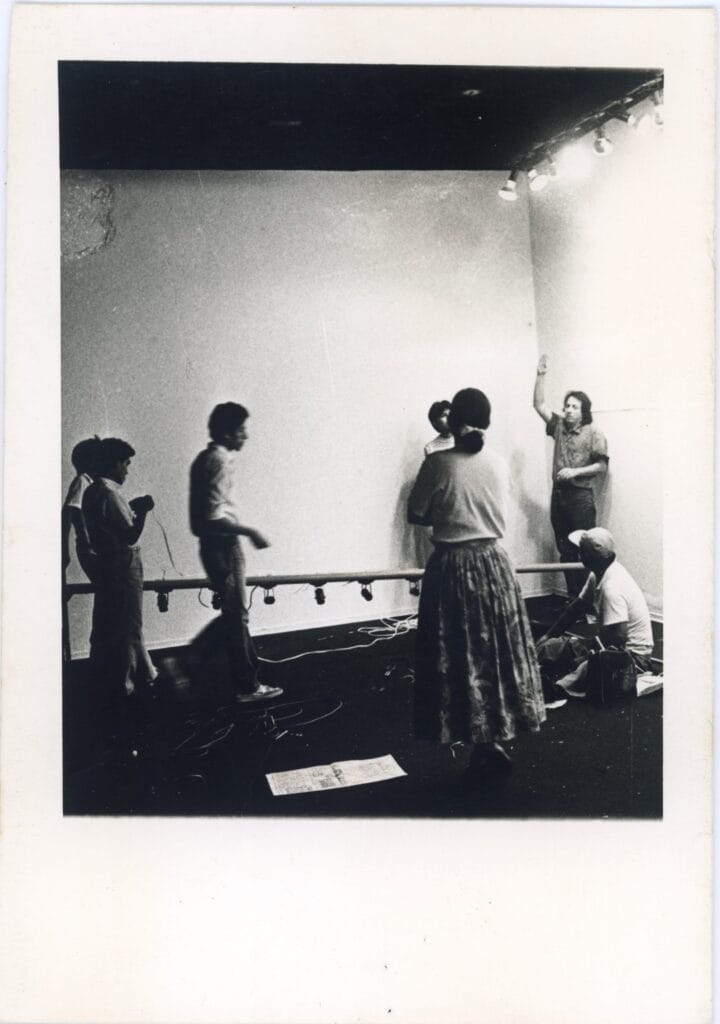
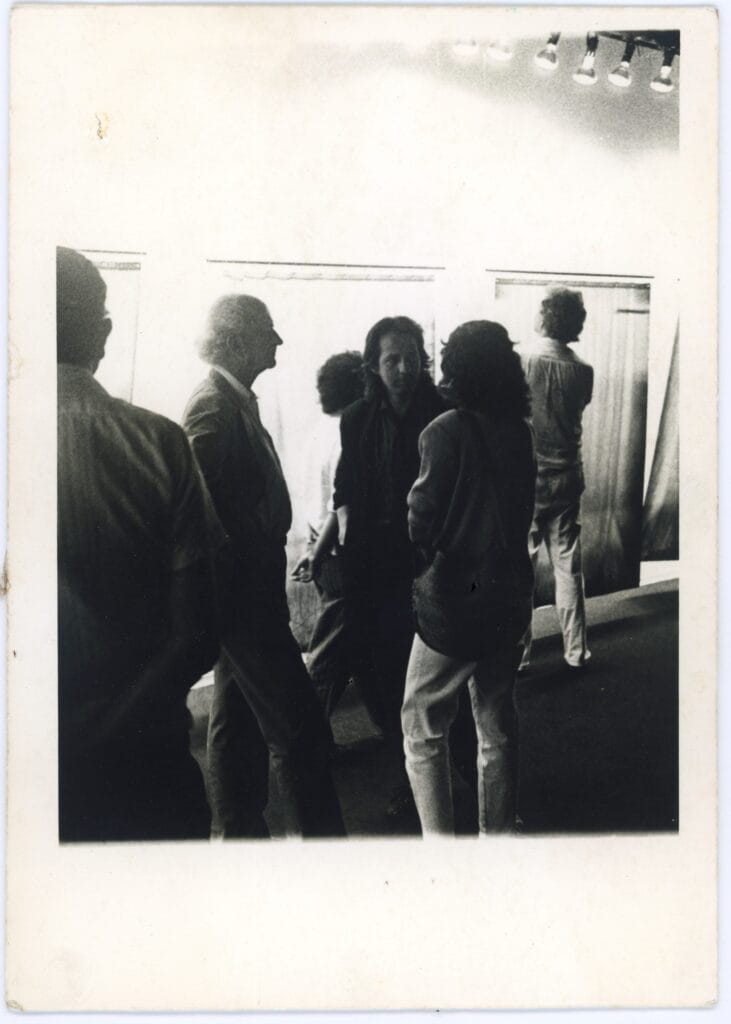
Late 1980s
History
From 1988 until the mid 1990s, homicides, torture, and forced disappearances aggrieve the municipalities of Trujillo, Riofrío, and Bolívar, in order to intimidate the civilian population. This becomes known as the Massacre of Trujillo, carried out by a mix of military and paramilitary forces, active in northern Valle del Cauca (approximately 62 miles from Cali). The victim tally is 342.
From 1988 until 2013, Cali has the highest homicide rates in Colombia, with 5,000 people murdered during this period. The Cali Cartel in southern Colombia becomes independent from the Medellín Cartel. It focuses on drug transport and distribution, while production is managed mostly by Pablo Escobar. Estimates suggest the Cali Cartel achieves control over 90 percent of the world’s cocaine market, including Europe and the United States, via New York. The Cali Cartel becomes integrated in the Colombian economy through legal investments, but it also carries out illegal activities like kidnapping, developing wide networks of informants, massive telephone wiretapping, government corruption, money laundering, social cleansing against poor and marginal groups, and controlling its own members through violence and extortion. Increasingly, they channel their illicit funds through international financial circuits rather than laundering capital through the Colombian economy. At odds with how to fight the government, the Cali and Medellín cartels begin a war against each other and against the government, unleashing violence throughout the country.
Art/Culture
Cultural activities in Cali become stagnant as the drug trade permeates all levels of society and government.18 Censorship as well as the threat of imprisonment and torture inhibit public or collective cultural activities. Artists show a resurgent interest in addressing violence in their work but through indirect and symbolic means.19
1988
Art/Culture
Muñoz participates in the I Art Biennial, Museum of Modern Art of Bogotá.
1989
History
This is considered one of the most tragic years in Colombian history and includes the assassination of three presidential candidates and an Avianca plane, blown up mid-flight. As a result, the government attempts to capture drug cartel leaders.
Art/Culture
The Cultural Center of the Bank of the Republic opens in Cali.
1 María Wills, “Entrevista retrospectiva a Oscar Muñoz,” banrepcultural.org <https://www.banrepcultural.org/oscar-munoz/entrevista-memorias-infancia-juventud.html>, accessed January 28, 2020.
2 Ramiro Arbeláez, “Oscar Muñoz en Cali,” unpublished paper, October 2013, posted in Academia.edu, accessed May 28, 2020.
3 Wills, “Entrevista retrospectiva.”; Diego Garzón, Otras voces, otro arte: diez conversaciones con artistas colombianos (Bogotá: Planeta, 2005), 51.
4 Muñoz, cited in Wills, “Entrevista retrospectiva.”
5 Mariángela Méndez, Seducción: Realismo extreme en la década del setenta en Colombia (Bogotá: Fundación Gilberto Alzate Avendaño, 2015), 218–19.
6 Santiago Rueda Farjardo, “Retratos de ciudad, billares, bicicletas, galladas y prostitutas: Fernell Franco, en corto diálogo con la fotografía colombiana”, Estudios Artísticos: Revista de investigación creadora, vol. 3, no. 3: 15–38. Digital Object Identifier (DOI): <https://doi.org/10.1448/ear.v3i3.12526>, 27.
7 Marie-Françoise Govin, “Luis ¿por qué Cali?” cinémas d’amérique latine, no. 25, 2017: 22-33. Digital Object Identifier (DOI): <https://doi.org/10.4000/cinelatino.3568>. Accessed on September 15, 2020.
8 Méndez, Seducción, 229.
9 Méndez, Seducción, 229
10 Maria Iovino, Óscar Muñoz: volverse aire (Bogotá: Eco, 2003), 41-43.
11 Muñoz, cited in Wills, “Entrevista retrospectiva.”
12 Muñoz, cited in Wills, “Entrevista retrospectiva..
13 María Margarita Malagón, “Art as Indexical Presence, The Work of Three Colombian Artists in Times of Violence: Beatriz González, Oscar Muñoz and Doris Salcedo in the 1990s,” doctoral dissertation, The University of Texas at Austin, 2006, 54–55.
14 Malagón, “Art as Indexical Presence,” 142.
15 Iovino, Oscar Muñoz, 43; Malagón, “Art as Indexical Presence,” 57, 145.
16 María Margarita García, “Desde este corredor largo y oscuro,” La Prensa, September 3, 1988: 15.
17 Muñoz, cited in Wills, “Entrevista retrospectiva.”
18 Marie-Françoise Govin, “Luis ¿por qué Cali?” cinémas d’amérique latine, no. 25, 2017: 22-33. Digital Object Identifier (DOI): <https://doi.org/10.4000/cinelatino.3568>. Accessed on September 15, 2020.
19 Malagón, “Art as Indexical Presence”: 25.

